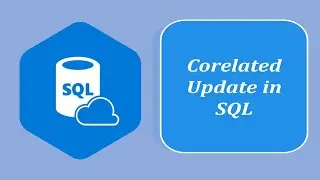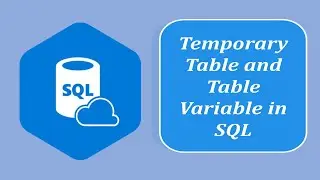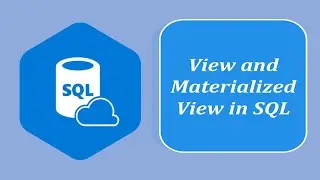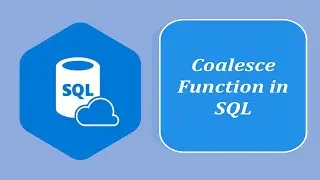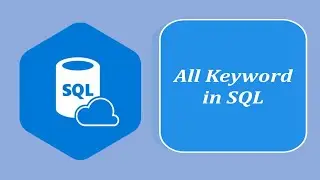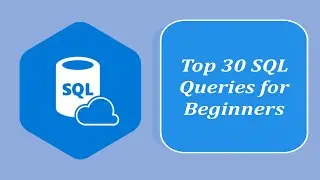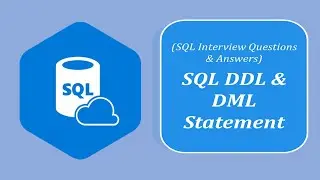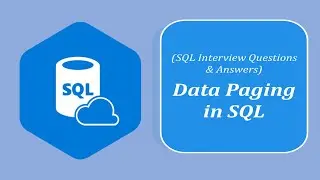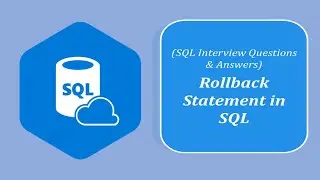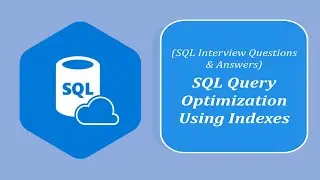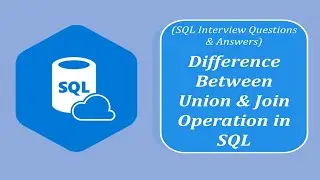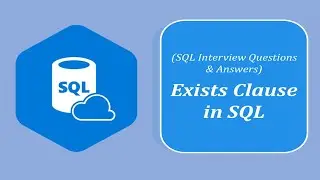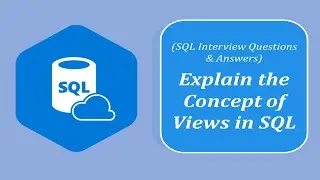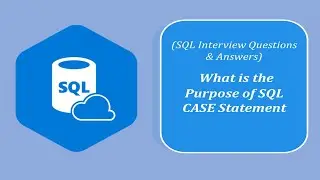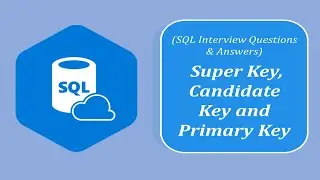SQL Interview Question and Answers | Temporary Table and Table Variable in SQL
Temporary tables and table variables are two different ways to store and manipulate temporary data within a database, and they have distinct characteristics and use cases. Here's a comparison of the two:
**Temporary Tables**:
1. **Physical Storage**: Temporary tables are stored in the database as physical database objects. They are created in a similar way to regular tables, but their names typically start with a "#" symbol in SQL Server or are placed in a specific schema or namespace in other database systems to indicate their temporary nature.
2. **Data Persistence**: Temporary tables persist beyond the scope of a single query or transaction. They are typically available for the duration of a user's session or until they are explicitly dropped or the session ends.
3. **Data Modification**: Temporary tables can be modified just like regular tables. You can insert, update, and delete data from them, and the changes are retained.
4. **Indexes and Statistics**: You can create indexes on temporary tables, and they can have statistics generated, which can help in query optimization.
5. **Transaction Scope**: Temporary tables can be part of a larger transaction and can be committed or rolled back along with other changes.
6. **Use Cases**: Temporary tables are often used for storing intermediate results, caching data, or breaking down complex queries into smaller, more manageable steps. They are suitable for scenarios where data persistence and the ability to perform data modifications are required.
**Table Variables**:
1. **In-Memory Data**: Table variables are stored in memory rather than as physical database objects. They are declared within the scope of a script or a batch, and they are not persisted in the database.
#sql
2. **Data Persistence**: Table variables are only available within the scope in which they are defined. They are automatically deallocated when the script or batch finishes execution. They do not persist beyond the current session or query.
3. **Data Modification**: Table variables can store and manipulate data like regular tables. You can insert, update, and delete data from them, but the changes are not retained beyond the current script or batch.
4. **Indexes and Statistics**: Table variables do not support the creation of indexes or the generation of statistics. They are limited to the data structure and content defined in the variable.
5. **Transaction Scope**: Table variables are typically isolated within the scope of the current transaction or batch, but they do not support distributed transactions.
6. **Use Cases**: Table variables are suitable for temporary, in-memory data storage where data persistence beyond the current scope is not needed. They are often used when you want to work with a small set of data and optimize query performance.
In summary, the main difference between temporary tables and table variables is that temporary tables are stored as physical objects in the database and persist beyond the current scope, while table variables are stored in memory, scoped to the current session or script, and automatically deallocated when the scope ends. The choice between the two depends on your specific requirements for data storage, persistence, and usage.
![Vs-Code COMMENTS SHORTCUT ITS VERY EASY[FOR HTML AND CSS]](https://images.videosashka.com/watch/YDUnWgsbwog)




![[НОВИНКА] Doom: The Dark Ages на 5090 (13.05.2025)](https://images.videosashka.com/watch/9GdISCrOtjk)



